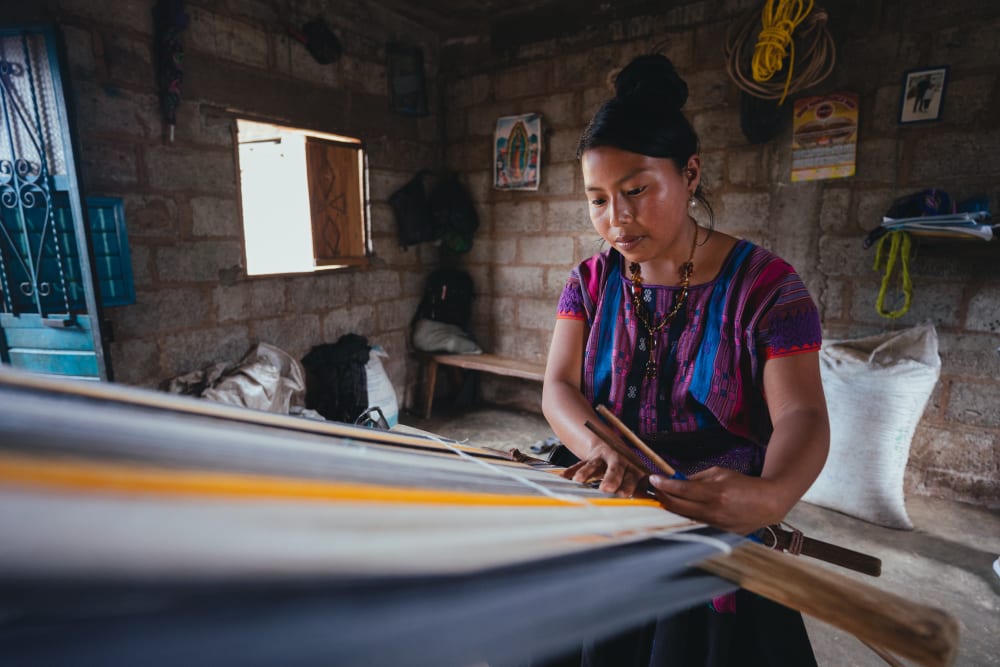In simple terms, consumerism is the idea that purchasing goods is a positive pursuit. We live in a consumerist society which is consumed itself with the idea that personal happiness and mental wellbeing are underpinned and strengthened by buying and owning material possessions. We are all guilty of searching for the temporary buzz of retail therapy. But are often mindless about the long term environmental and societal impacts that our purchases have. The first step to conscious consumerism is understanding the history and the issues that surround it!
Consumerism: A History
For the majority of history people have owned very little, aside from some basic essentials like the clothes on their backs and something to cook dinner in. However, in the early eighteenth century there was a shift. Countries in north-western Europe began to expand their empires and colonise countries to the east. Colonisation led to a growth in western economies and wages began to rise. This is considered to be the first wave of consumerism. In places like the UK, families began to be able to afford small luxuries such as a comb or a spare pair of trousers. The more people spent, the more business grew and wages rose. This was the beginning of consumerism and began to change the fabric of our society. This was underpinned by the new flow of goods from overseas and the growth in industries supporting the new demand.
In the UK, the shift affected everything about society, even fashion! Prior to this wave of consumerism fashion had been fairly unchanged. Now people had so many more options and styles began changing yearly. Publications began instructing people how to keep up with the current trends which were often extremely theatrical and lavish. In the early 1770s there was a trend of women wearing wigs so tall that you needed to stand on top of a chair to touch the top. This was the beginning of trend fashion which has only accelerated and magnified.
From Consumerism to Fast Fashion
Consumerism in Europe has some questionable foundations, particularly when you consider that it was built on colonisation. The issues with consumerism have changed but they have not ceased to exist. The scale of consumerism in our society now compared to the eighteenth century is significant; according to National Geographic there are approximately 1.7 billion people worldwide that belong to the “consumer class”. The scale and pace of growth of this consumer class also created a demand for fast, mass production of cheap goods.
The issue of overconsumption of mass produced, cheap goods is really prevalent in the fashion industry. Fast fashion is produced on the basis that people will buy it and they do! In her book ‘Consumed’, Aja Barber suggests that the reason that fast fashion brands are so successful is because ‘they know that, if it can be pushed on us in the right way, we’ll buy it because we see more value in it than we do ourselves’. Consumers feel that their worth comes from the purchase of goods and that their actual worth is minimal without material possessions. This epitomises the issue of a consumerist society itself: by placing the highest value on the things we own, we place a lower value on the issues that come with it.
The production of these goods has an unsustainable impact on our natural resources and effect on our environment. As well as societal impacts in the countries that are tasked to produce the goods.
Environmental Impacts of Fashion Consumption
Water Consumption: Water is needed at every level of production in every single industry. The fashion industry is the second most-water intensive industry in the world. According to the ‘Pulse of the Fashion Industry Report’ (Global Fashion Agenda) in 2017, the industry consumes 79 billion cubic metres of water per year. Cotton, for example, requires a huge amount of water to be grown but equally for the manufacturing process where it is spun, dyed and made into a garment. The UN estimates that a single pair of jeans requires a kilogram of cotton and that this kilo of cotton requires around 7,500 – 10,000 litres of water to produce. Which for context is enough drinking water to sustain one person for 10 years.
Pollution: Across all industries there are varying levels of hazardous chemicals that are released during production. In the fashion industry this is no different. According to Good On You, about 8,000 synthetic chemicals are used to turn raw materials into textiles and around 20% of industrial water pollution globally comes from the treatment and dying of textiles. The chemicals used are then released into waterways which can be really damaging to local communities. As well as chemicals, microplastic pollution is also produced from clothing. 35% of microplastic pollution in the world’s oceans comes from synthetic fibres.
Emissions: The production of goods releases emissions into the atmosphere, particularly carbon. The fashion industry alone accounts for about 8-10% of global carbon emissions. According to Levi Strauss, the manufacturer for Levi Jeans, a pair of the 501’s will produce the equivalent of 33.4kg of carbon dioxide in its lifetime. Which is around the same as driving 69 miles in the average car! This estimation comes from the fibre and fabric production; the manufacturing process; packaging and transport and then consumer use, for example when you wash them.
Landfill: Consumerism fuels a throwaway mentality in society as we are in constant pursuit of something new to buy. This is a particular problem within the fashion industry; cheap fast fashion and constantly evolving trends results in regularly buying new and barely worn items ending up in landfill. According to WRAP, a waste charity, more than 300,000 tonnes of clothing went to landfill in 2017 alone. As textiles decompose they release methane which contributes to greenhouse gas emissions.

Social Impacts of Fashion Consumption
Unsustainable Production Chains: The fast consumption cycle means that brands have to produce a lot of products very quickly. Brands will haggle with factories to get the lowest possible price for production. The quick turn-around, high volume and low price has a huge impact on the human workers who create all garments. They are often underpaid and overworked to complete big orders from companies. In other instances, factories will be unable to complete the orders and so subcontract to smaller factories which may have even worse working conditions or use child labour. Larger companies can then claim that they weren’t aware that the factory would outsource their production. However, in her book, Aja Barber suggests that “they [companies] DID know that asking for thousands of pieces in an impossibly short turnaround was, well impossible. And they DID know that somewhere down the chain there would be a cost”.
Unequal distribution of wealth: Developing countries are often the places that companies use to purchase the components of their products and to carry out production at a low cost. This system creates a widening gap in the distribution of wealth. According to Oxfam almost half of humanity is living on less than $5.50 a day. In the fashion industry, the places where our clothes are made are among some of the poorest places in the world. Fast fashion and consumerism is keeping these countries and the people in them poor, so that we can have cheap clothes.

How do we as consumers tackle the issues of consumerism?
Consumerism in today’s society can easily be considered over consumption; we buy an excess of goods because we want them and not because we need them. It would be unreasonable to suggest that we need to stop all production of goods because they have a negative impact on our environment. However, it is the scale and focus on keeping the cost as low as possible for consumers which makes the issues so much more prominent. It’s fairly obvious there are some massive issues with the way in which big businesses run in order to keep up with growing consumerism in our society. There are a multitude of issues that need to be addressed and drastic changes that need to be made. We can advocate for better practices and we should, but there are also things we can do as consumers to make changes.
Be informed: Educate yourself on the issues that consumerism causes. Understand what you are buying. Where was this made? Who made it? What is it made from?
Be conscious: Make purchase decisions that are for things that you need and not always for things you want. Consider all the implications of that decision before you make it, consider purchasing things that are more durable and versatile, in order to maximise wear and use. Understand the brand you are buying from, what they stand for and how they produce their items. Wherever possible, support brands that place sustainability and ethical practices at the heart of their business.
Be responsible: When you make a purchase, understand that you are now responsible for where that item ends up. If you decide that you no longer want to keep an item, there are so many options to extend its life span before it ever needs to end up in landfill.
Read our earlier writings on how to Sustainably spring clean your wardrobe.
Curobe’s approach to conscious fashion
At Curobe, we offer an alternative, more conscious way to shop fashion. Our curation engine helps you focus on finding styles that fit your body and dressing preferences. The size suggestions not only give you ease of purchasing, because it takes the guesswork out of choosing the right size and fit, but also helps avoid the wastefulness of size bracketing and returns. We also choose to partner with responsible brands which are leading the way in tackling the issues of consumerism, who opt for more sustainable and ethical ways of design, production and manufacturing.
“Gung Ho was built with these ethics right from the start. It is who we are and what we believe in, and we haven’t strayed from that. From the prints, fabrics, adjustable garments, reusable packaging to upcycling, and now made to order- we rethink how a typical fashion business should be run.” - Sophie Dunster, Founder @ Gung Ho
“I wanted to create a social enterprise brand that supported communities in India through empowering work and giving back. For us sustainable and ethical fashion is about prioritising people and the planet, which is at the heart of our brand ethos.” - Jenny Allan @ Jenerous
Like what you just read? Share it on:

